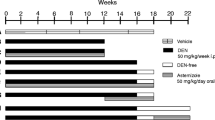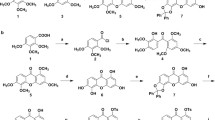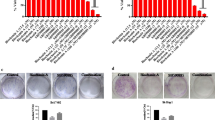Abstract
Liver cancer annually accounts for over 800,000 cases and 700,000 deaths worldwide. Hepatocellular carcinoma is responsible for over 80% of liver cancer cases. Due to ineffective treatment options and limited surgical interventions, hepatocellular carcinoma is notoriously difficult to treat. Nonetheless, drugs utilized for other medical conditions, such as the antihypertensive medication prazosin, the neuroleptic medication chlorpromazine, and the neuroleptic medication haloperidol, have gained attention for their potential anti-cancer effects. Therefore, this study used these medications for investigating toxicity to hepatocellular carcinoma while testing the adverse effects on a noncancerous liver cell line model THLE-2. After treatment, an XTT cell viability assay, cell apoptosis assay, reactive oxygen species (ROS) assay, apoptotic proteome profile, and western blot were performed. We calculated IC50 values for chlorpromazine and prazosin to have a molar range of 35–65 µM. Our main findings suggest the capability of both of these treatments to reduce cell viability and generate oxidative stress in HepG2 and THLE-2 cells (p value < 0.05). Haloperidol, however, failed to demonstrate any reduction in cell viability revealing no antitumor effect up to 100 µM. Based on our findings, a mechanism of cell death was not able to be established due to lack of cleaved caspase-3 expression. Capable of bypassing many aspects of the lengthy, costly, and difficult cancer drug approval process, chlorpromazine and prazosin deserve further investigation for use in conjunction with traditional chemotherapeutics.




Similar content being viewed by others
Data availability
No datasets were generated or analysed during the current study.
References
Li Q, Cao M, Lei L, Yang F, Li H, Yan X, He S, Zhang S, Teng Y, Xia C, Chen W. Burden of liver cancer: From epidemiology to prevention. Chin J Cancer Res. 2022;34(6):554–66. https://doi.org/10.21147/j.issn.1000-9604.2022.06.02.
Tunissiolli N, Castanhole-Nunes M, Biselli-Chicote P, Pavarino É, Silva R, Silva R, Goloni-Bertollo E. Hepatocellular carcinoma: a comprehensive review of biomarkers, clinical aspects, and therapy. Asian Pac J Cancer Prev. 2017;18:863–72.
Golabi P, Fazel S, Otgonsuren M, Sayiner M, Locklear C, Younossi Z. Mortality assessment of patients with hepatocellular carcinoma according to underlying disease and treatment modalities. Medicine (Baltimore). 2017. https://doi.org/10.1097/MD.0000000000005904.
Tang W, Chen Z, Zhang W, Cheng Y, Zhang B, Wu F, Wang Q, Wang S, Rong D, Reiter F, Toni E, Wang X. The mechanisms of sorafenib resistance in hepatocellular carcinoma: theoretical basis and therapeutic aspects. Signal Transduct Target Ther. 2020;5:87. https://doi.org/10.1038/s41392-020-0187-x.
Yang G, Xing J, Aikemu B, Jing S, Minhua Z. Kaempferol exhibits a synergistic effect with doxorubicin to inhibit proliferation, migration, and invasion of liver cancer. Oncol Rep. 2021;45:32. https://doi.org/10.3892/or.2021.7983.
Zhang Y, Zhang Y, Shi X, Li J, Wang L, Xie C, Wang Y. Chenodeoxycholic acid enhances the effect of sorafenib in inhibiting HepG2 cell growth through EGFR/Stat3 pathway. Front Oncol. 2022. https://doi.org/10.3389/fonc.2022.836333.
Erstad D, Tanabe K. Hepatocellular carcinoma: early-stage management challenges. J Hepatocell Carcinoma. 2017;4:81–92. https://doi.org/10.2147/JHC.S107370.
Yang J, Hainaut P, Gores G, Amadou A, Plymoth A, Roberts L. A global view of hepatocellular carcinoma: trends, risk, prevention and management. Nat Rev Gastroenterol Hepatol. 2019;16:589–604. https://doi.org/10.1038/s41575-019-0186-y.
Silva M, Sherman M. Criteria for liver transplantation for HCC: what should the limits be? J Hepatol. 2011;55:1137–47. https://doi.org/10.1016/j.jhep.2011.05.012.
Chawla A, Ferrone C. Hepatocellular carcinoma surgical therapy perspectives on the current limits to resection. Chin Clin Oncol. 2018;7:48.
Zhang Z, Zhou L, Xie N, Edouard N, Zhang T, Cui Y, Huang C. Overcoming cancer therapeutic bottleneck by drug repurposing. Signal Transduct Target Ther. 2020;5:113. https://doi.org/10.1038/s41392-020-00213-8.
Lin S, Chueh S, Hsiao C, Li T, Chen T, Liao C, Lyu P, Guh J. Prazosin displays anticancer activity against human prostate cancers: targeting DNA and cell cycle. Neoplasia. 2007;9:830–9. https://doi.org/10.1593/neo.07475.
Kamgar-Dayhoff P, Brelidze T. Multifaceted effect of chlorpromazine in cancer implications for cancer treatment. Oncotarget. 2021;12:1406.
Papadopoulos F, Isihou R, Alexiou G, Tsalios T, Vartholomatos E, Markopoulos G, Sioka C, Tsekeris P, Kyritsis A, Galani V. Haloperidol induced cell cycle arrest and apoptosis in glioblastoma cells. Biomedicines. 2020;8:595. https://doi.org/10.3390/biomedicines8120595.
An M, Ma W, Jia H, Li Y, Feng J, Meng J, Hui Q, Liu J. Prazosin inhibits the growth and mobility of osteosarcoma cells. Transl Cancer Res. 2019;8:1997.
Xu F, Xi H, Liao M, Zhang Y, Ma H, Wu M, Xue Q, Sun H, Zhang Y, Xia Y. Repurposed antipsychotic chlorpromazine inhibits colorectal cancer and pulmonary metastasis by inducing G2/M cell cycle arrest, apoptosis, and autophagy. Cancer Chemother Pharmacol. 2022;89:331–46. https://doi.org/10.1007/s00280-021-04386-z.
Tang D, Kang R, Berghe TV, Vandenabeele P, Kroemer G. The molecular machinery of regulated cell death. Cell Res. 2019;29:347–64. https://doi.org/10.1038/s41422-019-0164-5.
Pan F, Lin X, Hao L, Wang T, Song H, Wang R. The critical role of ferroptosis in hepatocellular carcinoma. Front Cell Dev Biol. 2022. https://doi.org/10.3389/fcell.2022.882571.
Poon I, Hulett M, Parish C. Molecular mechanisms of late apoptotic/necrotic cell clearance. Cell Death Differ. 2010;17:381–97. https://doi.org/10.1038/cdd.2009.195.
Shlomovitz I, Speir M, Gerlic M. Flipping the dogma – phosphatidylserine in non-apoptotic cell death. Cell Commun Signal. 2019;17:139. https://doi.org/10.1186/s12964-019-0437-0.
Morgan K, Martucci N, Kozlowska A, et al. Chlorpromazine toxicity is associated with disruption of cell membrane integrity and initiation of a pro-inflammatory response in the HepaRG hepatic cell line. Biomed Pharmacother. 2019;111:1408–16. https://doi.org/10.1016/j.biopha.2019.01.020.
Fuchs R, Schwach G, Stracke A, et al. The anti-hypertensive drug prazosin induces apoptosis in the medullary thyroid carcinoma cell line TT. Anticancer Res. 2015;35(1):31–8.
Lin SC, Chueh SC, Hsiao CJ, et al. Prazosin displays anticancer activity against human prostate cancers: targeting DNA and cell cycle. Neoplasia. 2007;9(10):830–9. https://doi.org/10.1593/neo.07475.
Rai S, Tanaka H, Suzuki M, et al. Chlorpromazine eliminates acute myeloid leukemia cells by perturbing subcellular localization of FLT3-ITD and KIT-D816V. Nat Commun. 2020;11(1):4147. https://doi.org/10.1038/s41467-020-17666-8.
Mann, S.K., Marwaha, R., Chlorpromazine. In: StatPearls. StatPearls Publishing; 2024. http://www.ncbi.nlm.nih.gov/books/NBK553079/
Basquez, R., Pippin, M.M. Prazosin. In: StatPearls. StatPearls Publishing; 2024. http://www.ncbi.nlm.nih.gov/books/NBK555959/
Fang J, Han T, Wu Q, Beland F, Chang C, Guo L, Fuscoe J. Differential gene expression in human hepatocyte cell lines exposed to the antiretroviral agent zidovudine. Arch Toxicol. 2014;88:609–23. https://doi.org/10.1007/s00204-013-1169-3.
Li Y, Zuo H, Wang H, Hu A. Decrease of MLK4 prevents hepatocellular carcinoma (HCC) through reducing metastasis and inducing apoptosis regulated by ROS/MAPKs signaling. Biomed Pharmacother. 2019. https://doi.org/10.1016/j.biopha.2019.108749.
Srinivas U, Tan B, Vellayappan B, Jeyasekharan A. ROS and the DNA damage response in cancer. Redox Biol. 2019. https://doi.org/10.1016/j.redox.2018.101084.
Zhang, Y., Cao, Y., Luo, S., Mukerabigwi, J.F., Liu, M. Chapter 8 - Nanoparticles as drug delivery systems of combination therapy for cancer. In: Grumezescu AM, ed. Nanobiomaterials in Cancer Therapy. William Andrew Publishing, 2016, 253–280. doi:https://doi.org/10.1016/B978-0-323-42863-7.00008-6
Yu B, Tai HC, Xue W, Lee LJ, Lee RJ. Receptor-targeted nanocarriers for therapeutic delivery to cancer. Mol Membr Biol. 2010;27(7):286–98. https://doi.org/10.3109/09687688.2010.521200.
Lancet JE, Uy GL, Cortes JE, et al. CPX-351 (cytarabine and daunorubicin) liposome for injection versus conventional cytarabine plus daunorubicin in older patients with newly diagnosed secondary acute myeloid leukemia. J Clin Oncol. 2018;36(26):2684–92. https://doi.org/10.1200/JCO.2017.77.6112.
Juaid N, Amin A, Abdalla A, et al. Anti-hepatocellular carcinoma biomolecules: molecular targets insights. Int J Mol Sci. 2021;22(19):10774. https://doi.org/10.3390/ijms221910774.
Singh A, Mishra S, Sharma S, Ojha S, Yagnik S, Pandey S. Ligand-mediated targeted drug delivery approaches against hepatocellular carcinoma. Curr Cancer Drug Targets. 2023;23(11):879–88. https://doi.org/10.2174/1568009623666230503094346.
Acknowledgements
We would like to thank Missouri State University for the resources and materials provided within their facilities and laboratories.
Funding
This research was funded by Missouri State University Foundation Funds donated by the Nagarajan family.
Author information
Authors and Affiliations
Contributions
Conceptualization, P.N and K.K; methodology, P.N, S.H, and K.K; software, P.N and S.H; validation, P.N, S.H, and K.K; formal analysis, P.N and S.H; investigation, P.N and S.H; resources, P.N and K.K; data curation, P.N and S.H; writing — original draft preparation, P.N; writing — review and editing, P.N, S.H, and K.K; visualization, P.N and S.H; supervision, K.K; project administration, K.K; funding acquisition, P.N and K.K. All authors have read and agreed to the published version of the manuscript.
Corresponding author
Ethics declarations
Conflict of interest
The authors declare no conflict of interest.
Additional information
Publisher's Note
Springer Nature remains neutral with regard to jurisdictional claims in published maps and institutional affiliations.
Rights and permissions
Springer Nature or its licensor (e.g. a society or other partner) holds exclusive rights to this article under a publishing agreement with the author(s) or other rightsholder(s); author self-archiving of the accepted manuscript version of this article is solely governed by the terms of such publishing agreement and applicable law.
About this article
Cite this article
Harris, S., Nagarajan, P. & Kim, K. The cytotoxic effects of prazosin, chlorpromazine, and haloperidol on hepatocellular carcinoma and immortalized non-tumor liver cells. Med Oncol 41, 87 (2024). https://doi.org/10.1007/s12032-024-02323-7
Received:
Accepted:
Published:
DOI: https://doi.org/10.1007/s12032-024-02323-7




